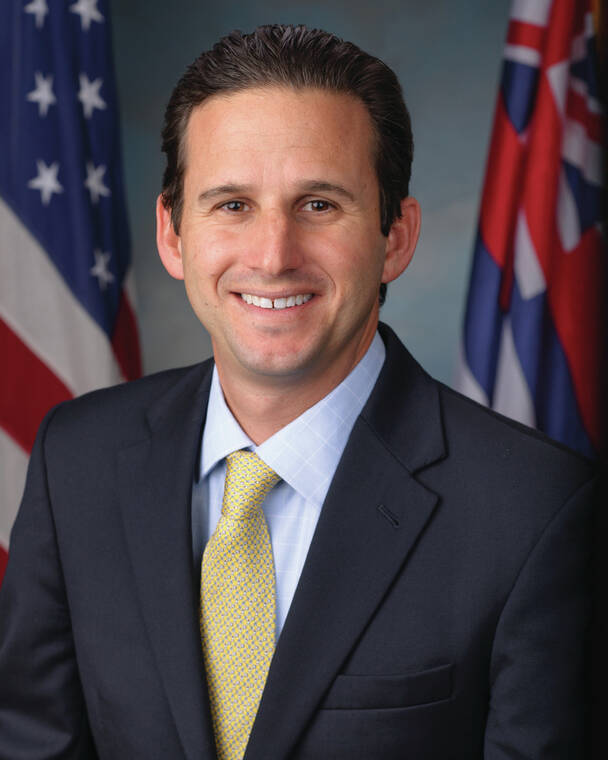Climate change in Hawaii and the Pacific Islands threatens unique island ecosystems, cultural resources, human health, livelihoods and access to clean water and healthy food.
Those are among the findings of the U.S. National Climate Assessment, released Tuesday by the Biden Administration, which involved five University of Hawaii at Manoa researchers who collaborated on a chapter in the massive 37-chapter report. The assessment concluded that actions based on local and indigenous knowledge can improve the resilience of Pacific Island communities.
“Climate change continues to threaten things we care about,” said climatologist Abby Frazier, a UH affiliate faculty member and an assistant professor at Clark University who is the Hawaii chapter’s lead author. “As the devastating hurricane-fueled wildfires on Maui and Typhoon Mawar in Guam made clear, when communities are already hurting from stressors like COVID-19, extreme weather can multiply harms.
“The sooner we scale up global action to curb threats from climate change, the better. Fortunately, cutting emissions or preparing for new extremes also creates immediate local benefits — improved health, a stronger economy and more resilient communities.”
On a national level, the report — the fifth such document produced every four to five years, and the first since 2018 — found that climate change is increasing rapidly and now permeates Americans’ daily lives with harm that is “already far-reaching and worsening across every region of the United States.”
“Climate change in our region is already present in basically every location in Hawaii and the Pacific Islands,” said Zena Grecni, an Arizona State University climatologist and part of a National Oceanic and Atmospheric Administration-funded team headquartered at UH-Manoa’s East-West Center. “At higher global warming levels, we will experience more severe climate impacts. So, any action we take to cut carbon dioxide emissions means less severe impacts and lower costs in the long run.”
According to Grecni, sea-level rise “exacerbates high-tide flooding events” in Hawaii.
“Here on Oahu, oftentimes in Kaaawa, you see water running over the road, or we see high tides pushing water up the storm drains in places such as Mapunapuna,” she said. “We also see that sea-level rise produces erosion on our shorelines and beaches. That sometimes results in the loss of land and even structures, with houses falling down cliffs and onto the beach. And this is a huge issue. There’s more than 6,000 structures and 20,000 residents directly in the line of sea-level rise.
“And the state’s assessment … shows that we’re going to incur tens of billions of dollars in economic losses due to sea-level rise which continues through 2100 or beyond.”
Kirsten Oleson, UH-Manoa professor of ecological economics, said rising temperatures and changing rainfall patterns affect “all our native ecosystems” and “our native species’ ability to survive.”
“One of the most obvious impacts of climate change is bleaching coral reefs,” Oleson said. “As the (ocean) surface temperature rises, they’re prone to bleaching and can die off. Coral reefs obviously provide humans with a lot of benefits — fishing and recreational benefits, coastal protection.
“Sea-level rise also threatens our wetlands, our coastal habitats and can erode beaches. So, we’re going to lose a lot of our natural assets that we rely on for our well-being and our economy.”
Malia Nobrega-Olivera, a Native Hawaiian educator, kumu hula, salt maker and cultural practitioner in Hanapepe, Kauai, said the presence of cars and trucks, with their greenhouse gas emissions, have affected the ability of the 22 remaining salt makers on the Garden Island to produce their highly prized product.
“Where we make salt here on Kauai is right by the Salt Pond Beach Park,” Nobrega-Olivera said. “And in the last few years, by recommendation of the salt makers and our community, we worked with the County of Kauai to actually close down a part of that beach to vehicular access, because we were experiencing … the ocean coming into the salt-making area.
“And by closing it down to the cars and the trucks, we’ve seen a decrease of … the waves in the area. And that has mitigated some of the flooding of the ocean waters to the salt-making area.”
Nobrega-Olivera said some salt makers had zero production for a period of five to seven years, and are now able to make salt again.
“It’s exciting to see the community solution-driven impacts,” she said. “We’ve highlighted that in the report, that it’s about people working together to work toward the solutions.”
The national report contained details chronicling climate change’s impact at the local level all over the U.S.
Unveiling the report at the White House, President Joe Biden blasted Republican legislators and his predecessor for disputing global warming.
“Anyone who willfully denies the impact of climate change is condemning the American people to a very dangerous future. Impacts are only going to get worse, more frequent, more ferocious and more costly,” Biden said, noting that disasters cost the country $178 billion last year.
“None of this is inevitable.”
Overall, Tuesday’s assessment paints a picture of a country warming about 60% faster than the world as a whole, one that regularly gets smacked with costly weather disasters and faces even bigger problems in the future.
Since 1970, the 48 contiguous U.S. states have warmed by 2.5 degrees Fahrenheit, and Alaska has heated up by 4.2 degrees, compared to the global average of 1.7 degrees, the report said.
But what people really feel is not the averages, but when weather is extreme.
“One thing that stuck out for me is that climate change is undermining human health,” Grecni said. “And the Honolulu Resilience Office mapped heat indices on a hot summer day across neighborhoods in Honolulu — everywhere from Kalihi to Kahala. And it was very hot, over 100 degrees in the neighborhoods, sometimes reaching 107. And we know that those heat extremes are increasing in frequency and intensity, and they’re going to worsen our health outcomes.”
U.S. Sen. Brian Schatz, a Hawaii Democrat, said the document is a clarion call.
“This report makes clear what we’ve long known to be true: the impact of the climate crisis is only getting worse, and we need to take big, bold action to address it,” Schatz said in a statement. “The historic investments Congress made through the Inflation Reduction Act and the infrastructure legislation are already helping unlock clean energy and making communities across America more climate-resilient.
“But there’s still much more work to do, and I look forward to working with my colleagues and the Biden administration to take the kind of bold steps we need on climate to meet this moment.”
“There’s hope,” added Oleson.
“I think it’s important to stress that people can take action. Personally, they can get involved with their communities. They can talk to their lawmakers. They can vote.
“It’s not too late to make a really big difference. It’s a seemingly overwhelming problem but we can fix it.”
The Associated Press contributed to this report.
Email John Burnett at jburnett@hawaiitribune-herald.com.


